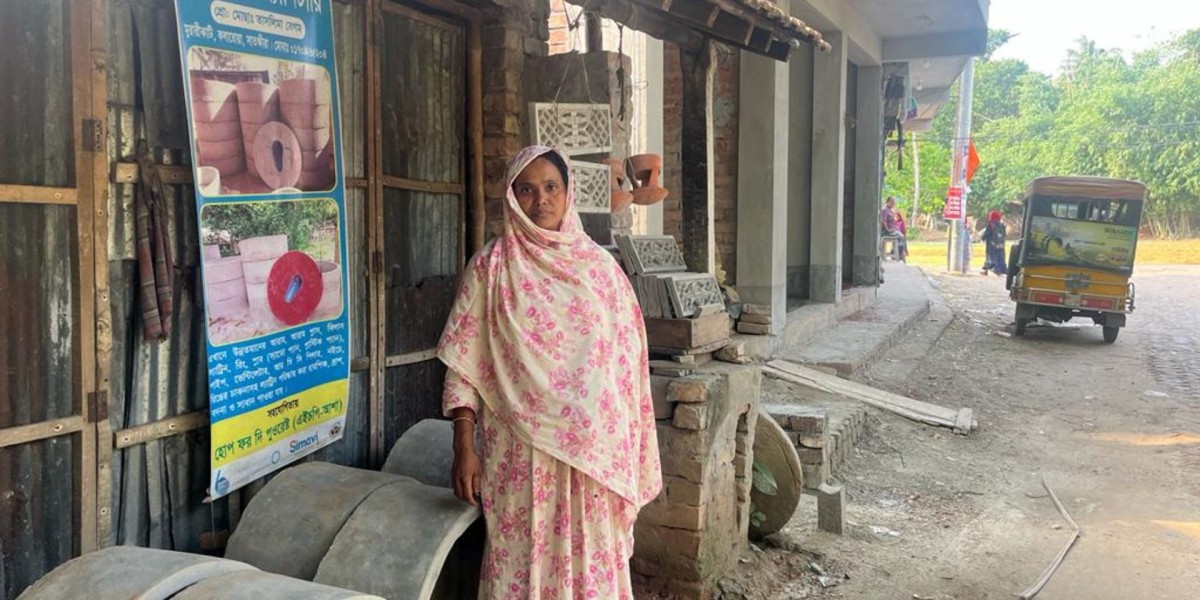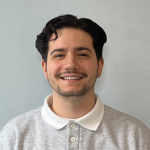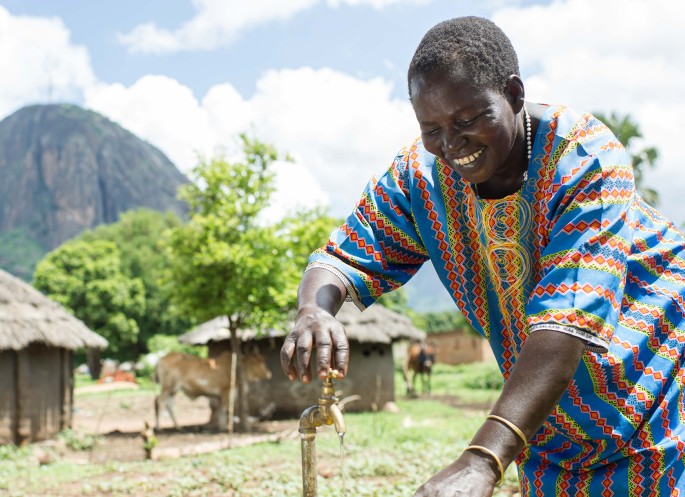From policy to impact: Insights from Simavi’s WASH SDG Programme
Real change starts with women. Master student Berk Çakmak investigated Simavi’s WASH SDG Programme and discovered four powerful lessons for impact.
When Berk Çakmak came across a post on LinkedIn about Simavi’s locally led approach to water and gender equality, he was intrigued. Now a master student in Management, Policy Analysis and Entrepreneurship in Health and Life Sciences at the Vrije Universiteit Amsterdam, he decided to dedicate his thesis to Simavi’s WASH SDG Programme, which ran from 2018 to 2024 in Bangladesh, Nepal and Uganda. His research dove into the policy behind the programme, and what it achieved.
‘I found the idea of combining SDG6, water for all, with SDG5, gender equality, really interesting’, Çakmak says. ‘So, I reached out to Simavi and ended up doing a policy analysis of the programme. I wanted to understand both the approach and the impact.’
And what he found, he says, was both sobering and hopeful.

A troubling baseline and surprising progress
Çakmak began by looking at baseline data on access to water, sanitation and hygiene. The results were, unfortunately, predictable.
‘In all three countries, the people with the worst access were the same: female-headed households, households with little or no education, and the poorest households’, he says. ‘It was quite depressing, to be honest.’
But when he compared that with data collected six years later, there was a surprise. The programme had worked.
‘What really stood out was that the gender gap in access to WASH had shrunk significantly’, he says. ‘I didn’t expect to see such a big change in such a short time.’
Listening to the people behind the progress
To better understand how those results came about, Berk Çakmak interviewed 13 people who were involved in implementing the programme across Uganda, Nepal and Bangladesh. What he heard confirmed just how complex the barriers are, especially for women.
‘I asked them about women’s participation, leadership and entrepreneurship. And across the board, there are so many challenges’, he says. ‘Cultural and societal norms that see women as less capable, male-dominated power and finance structures, and limited access to finance.’
One theme came up again and again: so-called ‘token participation.’
‘In all three countries, there are policies that require at least 30 percent female participation in water committees and other bodies’, he explains. ‘But in practice, that doesn’t always mean women really have a voice. One example someone shared was about a woman listed as secretary of a water committee, but it was her husband who handled the money and the decisions. She was just there on paper.’
There were even cases where funding meant to support women entrepreneurs ended up in the hands of male relatives.

'As soon as women started earning money, they gained more respect'
Working with - not against - men
Despite these frustrations, Çakmak also saw what worked. One key factor was including men in the process.
‘In meetings for women entrepreneurs, the programme sometimes invited husbands and other family members as well’, he says. ‘That really helped. It showed the men what the women were doing, helped build understanding, and created more space for women.’
Economic empowerment proved powerful as well.
‘As soon as women started earning money, they gained more respect. According to the expert, you could see a real shift in how they were treated, not just in their households, but in the community’, he says. ‘It shows how important income is for women to gain a say in decisions.’
Women lifting each other up
One of the most moving stories Çakmak heard came from a women’s group in a rural village. One of the members, an elderly widow, was struggling with a broken pit latrine.
‘The other women brought it up in their group discussion, and they decided to raise it with the community leaders’, he says. ‘That kind of collective action, where women not only help themselves, but look out for others, shows how inclusion can lead to more inclusion.’
From policy to practice
So, what’s the most important lesson for future programmes?
‘Implementation is crucial, Çakmak says. He stresses the importance of long-term, holistic programmes—ones that work with communities, not just for them.
‘Simavi’s approach focuses on behaviour change and rights. It’s not ‘we’ll build this for you’, but ‘you have the right to clean water, and we’ll support you to claim it.’
Another strategy that stood out was presenting local women as role models.
‘When one woman becomes an entrepreneur or a community leader, it inspires others. Especially when it’s someone from the same background, facing the same challenges. That visibility is really powerful.’
A message of hope
Despite the difficulties, Berk Çakmak came away from the research feeling hopeful.
‘Looking at the baseline data was hard. But the people I interviewed were optimistic. They see the problems, but they also see solutions. People are really resilient.’
His research confirmed something that’s been at the heart of Simavi’s work for years: investing in women’s leadership isn’t just good for women, it’s good for everyone.
‘When women lead, entire communities benefit’, he says. ‘There’s still a long way to go. But we know what works. Now we must keep going.’



